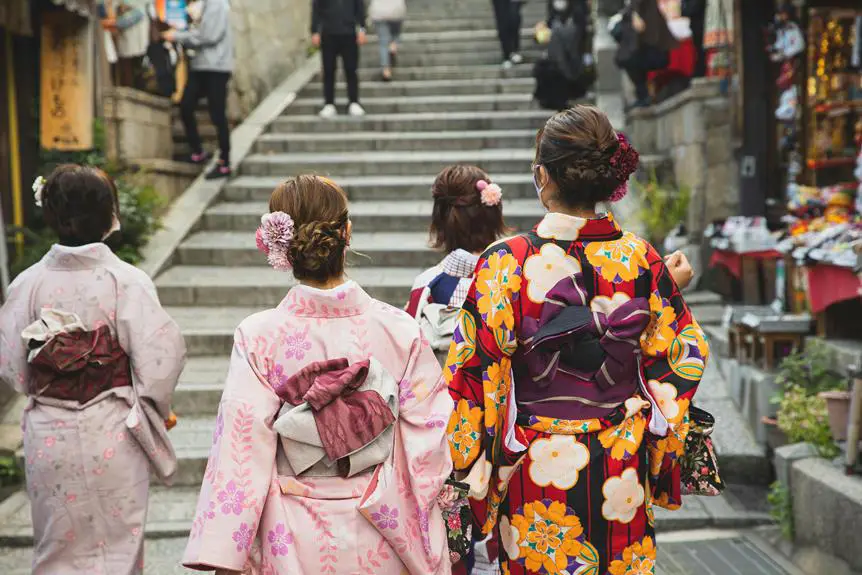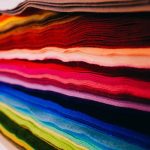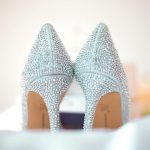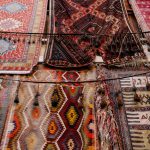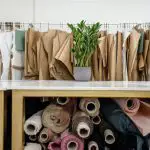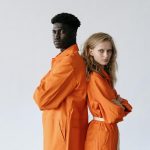When you think of broadcloth, you might picture luxurious fabrics draping the elite of history, but its journey is much more complex. Originating in the Middle Ages, it transformed from a symbol of wealth to a staple accessible to many during the Industrial Revolution. This evolution not only reflects societal shifts but also impacts contemporary fashion's approach to materials. As you explore its significance across different eras, you'll uncover how broadcloth's story intertwines with cultural movements and sustainable practices today—making you wonder how this fabric continues to shape our wardrobes.
Table of Contents
Origins of Broadcloth
Broadcloth originated in the Middle Ages as a versatile wool fabric, quickly gaining popularity for its durability and smooth finish. You might be surprised to learn that this fabric was initially produced in England but soon spread across Europe. Various regions began developing their own unique styles and techniques, enhancing broadcloth's reputation.
Craftsmen used high-quality wool and employed a special weaving method that created a dense, even surface. This made the fabric ideal for tailored clothing, as it draped beautifully and held its shape well. Broadcloth's appeal wasn't just limited to clothing; it also found its way into home textiles and accessories.
You can imagine how merchants eagerly transported broadcloth to trade fairs, where it was highly sought after. As demand grew, innovations in dyeing and finishing processes allowed for a wider range of colors and patterns, further solidifying broadcloth's position in the textile market.
Today, you can still find broadcloth in various applications, a testament to its enduring legacy. Understanding its origins helps you appreciate the fabric's historical significance in fashion and everyday life.
Broadcloth in the Medieval Era
In the Medieval Era, broadcloth became a staple fabric, known for its durability and luxurious feel.
You'll find that its characteristics not only defined its use in clothing but also served as a marker of social status among different classes.
Additionally, understanding the production techniques and trade surrounding broadcloth will give you insight into its significance in that time period.
Fabric Characteristics and Uses
During the Medieval Era, this versatile fabric became a staple in both everyday wear and formal attire due to its durability and rich texture. Broadcloth is tightly woven, which gives it a smooth surface and a weighty feel, making it ideal for various garments. You'll find it used in tunics, gowns, and cloaks, providing both warmth and a polished appearance.
The fabric's dense weave helps it resist wear and tear, ensuring that your clothing lasts longer, even with daily use. Additionally, broadcloth takes dye well, allowing for vibrant colors and patterns that can suit different occasions. This adaptability means you could easily dress it up for a feast or down for daily chores.
Broadcloth also drapes beautifully, enhancing the silhouette of any outfit. Its ability to hold shape while still allowing for movement makes it a popular choice for fitted designs. You might notice it used in layers, providing structure while remaining comfortable.
Social Status Indicators
The choice of broadcloth as a fabric often revealed one's social status, with its quality and color indicating wealth and prestige in the Medieval Era. When you walked through the streets, the vibrant hues and luxurious textures of broadcloth would catch your eye, speaking volumes about the wearer's position in society. The richer the color and finer the weave, the higher the status.
You'd notice how individuals used broadcloth to communicate their rank and influence. Factors that contributed to this social signaling included:
- Color: Deep reds and purples were reserved for nobility, while muted tones indicated lower classes.
- Weight: Heavier fabrics suggested affluence, as they were costly to produce.
- Decoration: Intricate embroidery or embellishments showcased wealth and taste.
In this era, broadcloth wasn't just clothing; it was a statement. By choosing specific colors and styles, you could convey your identity and aspirations without uttering a single word. This fabric truly became a canvas for social status, helping you navigate the complex hierarchy of medieval society.
Production Techniques and Trade
Broadcloth production in the Medieval Era relied on skilled craftsmanship and intricate techniques that transformed raw wool into the luxurious fabric desired by the elite.
You'd start with high-quality fleece, often sourced from specific breeds known for their fine wool. After shearing, the wool underwent washing and carding to remove impurities and separate the fibers.
Next, you'd spin the wool into yarn, a labor-intensive process that required both skill and precision. Once spun, the yarn was dyed using natural pigments, enhancing its richness and appeal.
Weaving came next, where skilled artisans used looms to create the broadcloth. This fabric was notably dense and smooth, providing warmth and durability.
Trade played a crucial role, too. Markets and fairs became hubs for broadcloth, with merchants transporting it across regions. The demand for this fabric led to the establishment of guilds, ensuring regulated production and quality control.
As you can see, the combination of artisanal skill and trade networks was vital in making broadcloth a symbol of wealth and status in Medieval society. Without these techniques, the fabric wouldn't have held the esteemed position it did in the world of fashion.
Renaissance Fashion and Broadcloth
In the Renaissance, fashion flourished with the vibrant use of broadcloth, transforming the way individuals expressed their status and identity. This luxurious fabric, made from wool, was a favorite among the wealthy and influential, showcasing their prominence in society.
You'd see broadcloth in various styles, colors, and patterns, often tailored into elaborate garments that emphasized the wearer's stature. Broadcloth played a crucial role in the fashion of the time, including:
- Richly colored gowns with flowing sleeves for women
- Tailored doublets and breeches for men
- Decorative trims and embroidery that highlighted wealth
As you explore Renaissance fashion, you'll notice how broadcloth became synonymous with elegance and refinement. The fabric's versatility allowed it to be used in everyday wear as well as in courtly attire.
It helped define social classes, as the quality and color of broadcloth could indicate one's wealth and position. In this vibrant era, wearing broadcloth wasn't just about style; it was a powerful statement about who you were in a rapidly changing world.
Broadcloth in the 18th Century
As fashion evolved in the 18th century, broadcloth continued to signify wealth and sophistication, adapting to the changing tastes of the elite.
You'd notice that broadcloth became a staple in the wardrobes of the upper class, often used in tailored coats, waistcoats, and dresses. The fabric's smooth texture and rich colors made it a favorite for formal occasions and day-to-day wear alike.
You might see men sporting long frock coats made from broadcloth, showcasing intricate details like embroidery and elaborate buttons. Women, on the other hand, favored gowns that accentuated their figures, often layering broadcloth with luxurious fabrics like silk or velvet. This combination enhanced the overall opulence of their attire.
During this period, colors also reflected status. While dark shades like navy and black were popular among men, women often chose vibrant hues to stand out.
You'd find that broadcloth wasn't just a fabric; it was a statement of identity and social standing. As the century progressed, the elegance of broadcloth continued to influence fashion, making it a timeless choice for those who sought to express their affluence and taste.
The Industrial Revolution's Impact
The Industrial Revolution transformed the production of broadcloth, making it more accessible and affordable for a wider range of society. With advancements in technology and machinery, the textile industry underwent significant changes. You'd notice how factories began to sprout up, increasing the speed and volume of production. This shift not only impacted the fabric itself but also the fashion landscape.
Here are some key changes you'd likely observe:
- Increased Production Efficiency: Machines like the power loom significantly sped up the weaving process.
- Lower Costs: Mass production led to lower prices, allowing even the working class to afford broadcloth garments.
- Diverse Patterns and Colors: The rise of synthetic dyes enabled a broader range of colors and patterns, appealing to various tastes.
As you can see, broadcloth became a staple in everyday wardrobes, reflecting the broader societal shifts of the time. The revolution not only altered how broadcloth was made but also its role in society, making it a fabric of the people.
Modern Interpretations of Broadcloth
In today's fashion scene, broadcloth is making a comeback, blending seamlessly with contemporary trends.
You'll notice designers aren't just focusing on aesthetics but also prioritizing sustainable fabric choices that resonate with eco-conscious consumers.
This shift reflects a deeper appreciation for both style and environmental responsibility.
Contemporary Fashion Trends
Modern designers are reimagining broadcloth by blending its classic qualities with innovative cuts and bold colors, making it a staple in contemporary wardrobes.
You'll find broadcloth not only in traditional shirts but also in a variety of modern silhouettes, offering endless styling options. This fabric's versatility allows you to dress it up or down, fitting seamlessly into any occasion.
Some contemporary trends with broadcloth include:
- Tailored Blazers: These structured pieces offer a polished look for both professional and casual settings.
- Asymmetrical Hemlines: Designers are playing with lengths, creating unique, eye-catching garments.
- Layering Techniques: Broadcloth works well with other fabrics, allowing you to create depth and texture in your outfit.
Incorporating broadcloth into your wardrobe allows you to embrace these trends while enjoying the fabric's timeless appeal.
Whether you're looking for a statement piece or a versatile staple, broadcloth's modern interpretations have you covered, ensuring you stay stylish and comfortable.
Sustainable Fabric Choices
Embracing sustainable fabric choices, many designers are now turning to eco-friendly materials to create innovative interpretations of broadcloth.
You'll find that today's broadcloth isn't just about traditional cotton; it's evolving with the use of organic fibers, recycled materials, and innovative blends. These sustainable options not only reduce environmental impact but also offer unique textures and finishes.
When you shop for modern broadcloth pieces, look for fabrics made from organic cotton or hemp. These materials are grown without harmful chemicals, promoting healthier ecosystems.
Additionally, some designers are experimenting with recycled polyester, sourced from plastic waste, proving that style doesn't have to compromise sustainability.
Incorporating these sustainable fabrics into your wardrobe means making a conscious choice that aligns with your values. You get to support brands that prioritize ethical practices while enjoying the versatility and durability of broadcloth.
As you explore these modern interpretations, you'll discover that sustainability and fashion can coexist beautifully. By choosing eco-friendly broadcloth, you're not just making a fashion statement; you're participating in a movement toward a more sustainable future.
Embrace these choices and feel good about the impact you're making on the planet.
Frequently Asked Questions
How Does Broadcloth Compare to Other Fabrics in Terms of Durability?
When you compare broadcloth to other fabrics, you'll find it's quite durable. It resists wear and tear better than many softer materials, making it a great choice for everyday wear and long-lasting garments.
What Colors Were Most Popular for Broadcloth Throughout History?
You'll find that popular colors for broadcloth have varied over time, with deep hues like navy, burgundy, and forest green often favored. Lighter shades, such as cream and pastel tones, also gained popularity in different eras.
Can Broadcloth Be Used for Formal Wear Today?
Yes, you can definitely use broadcloth for formal wear today. Its smooth texture and refined appearance make it an excellent choice for tailored suits, dresses, and other elegant garments that require a sophisticated finish.
How Has the Texture of Broadcloth Changed Over Time?
The texture of broadcloth has evolved significantly; it's become softer and more refined. You'll notice modern versions often feature a smoother finish, enhancing comfort and versatility for various garments while retaining its classic appeal.
Are There Specific Care Instructions for Broadcloth Garments?
To care for broadcloth garments, you should machine wash them in cold water, use a gentle cycle, and avoid bleach. For drying, tumble dry on low heat or hang them to preserve their texture.
- How Does Ring Spun Cotton Affect Garment Fit and Shape Retention? - August 13, 2024
- What Are the Challenges in Producing Ring Spun Cotton? - August 13, 2024
- Is Ring Spun Cotton Suitable for Plus-Size Clothing? - August 13, 2024

